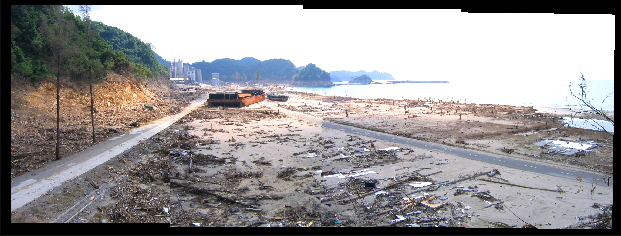 |
 |
 |
 |
 |

The ability to distinguish the deposits of ancient tsunamis from other coastal deposits remains of vital concern to the tsunami community. Historical records of tsunami do not, typically, extend farther back than 500 years (with the exception of Japan), and often do not exceed 150 years in the US. Because these records are so short, it is quite difficult to assess tsunami frequency and intensity without some means of extending the historical record. Typically, this has meant extending the record using paleotsunami deposits; however, this has necessarily meant understanding what tsunami deposits look like.
We seek to understand the depositional processes involved in sediment deposition by tsunamis not only to help distinguish tsunami deposits from other coastal deposits, but in order to help determine how large and how fast ancient tsunamis moved from the sediments they left behind. Our group has worked on modern tsunamis, historical tsunamis, and paleotsunamis.